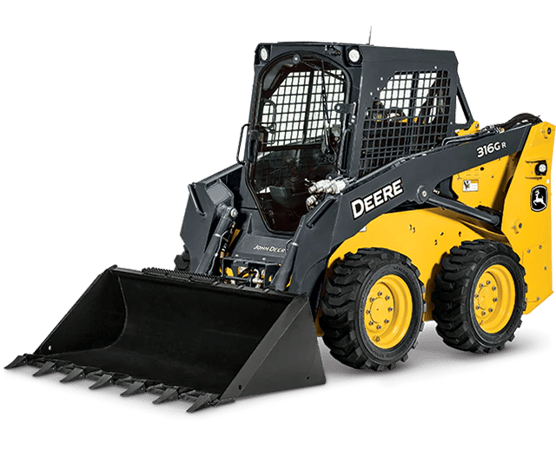Boom Lift Rental: Cost Effective and Reputable Lifts for Any Task
Boom Lift Rental: Cost Effective and Reputable Lifts for Any Task
Blog Article
Optimize Your Spending Plan by Understanding the Costs Connected With Building And Construction Equipment Rentals
Recognizing the full extent of costs connected with building equipment services is essential for optimizing your budget. What techniques can be used to effectively manage these prices and make sure a much more efficient rental experience?
Summary of Rental Expenses
When taking into consideration building equipment rentals, recognizing the connected expenses is critical for effective budgeting and job planning. Rental prices can vary dramatically based on several variables, including equipment kind, period of service, and place. The initial rental cost frequently shows the tools's market demand and its linked functional capacities, influencing the general expenditure.
Along with the base rental rate, supplementary prices may emerge, such as transportation costs, fuel surcharges, and upkeep charges. It is vital to make up these added costs to accurately evaluate the complete cost of renting out tools. Furthermore, the rental period can affect pricing; longer rentals may get discounted prices, while temporary leasings might sustain greater everyday charges.

Failure of Rental Prices
A comprehensive understanding of rental rates is vital for service providers and task supervisors intending to optimize their budgets. Rental prices for building tools normally consist of a number of elements, consisting of base prices, time-based costs, and use fees.
Base rates are the core costs related to the rental of the devices, often identified by the kind and dimension of the machinery. These prices can vary substantially, affected by variables such as equipment demand, availability, and regional market trends. Time-based fees, which may be daily, weekly, or monthly, serve to accommodate different job timelines and rental durations.
Furthermore, rental rates might consist of use fees, which are relevant when tools is made use of past a defined threshold, making sure that the rental company can make up damage. Seasonal need changes can likewise affect rental prices, with peak building seasons typically regulating higher prices.
In addition, recognizing the rental business's plans relating to maintenance and insurance coverage can provide additional understanding into the general price structure. By assessing these components, specialists can make enlightened decisions, making certain the choice of rental tools straightens with both job demands and budget constraints.
Added Charges to Think About
Recognizing the ins and outs of added costs is critical for contractors to manage their overall rental expenses efficiently. Beyond the basic rental rates, various supplemental fees can substantially affect the overall cost of equipment rental. These fees often consist of distribution and pick-up fees, which can vary based on range and logistics associated with moving the tools to and from the task site.
Furthermore, some rental companies might impose fuel additional charges if the tools is returned with much less fuel than when rented. It is additionally necessary to recognize prospective cleaning costs, specifically for specific equipment that calls for detailed upkeep after use.

Extensively examining the rental agreement and making clear these extra fees in advance can help service providers prevent unexpected expenses and ensure that spending plans remain undamaged throughout the project lifecycle.
Repair And Maintenance Costs
Regular repair and maintenance expenditures are typically overlooked elements that can significantly influence the total cost of building tools rentals. When leasing tools, it is important to take into consideration not only the rental charges yet also the potential expenses linked with keeping the machinery in ideal operating problem.
Many rental business consist of standard maintenance as part of the heavy equipment rental rental contract; nevertheless, extra unexpected break downs or substantial fixings can lead to additional costs. It's vital to assess the rental agreement meticulously to understand what maintenance services are covered and what responsibilities fall on the renter.
Additionally, equipment that is not well-maintained can result in ineffectiveness on the task website, possibly creating delays and increasing project costs. To mitigate these risks, it is advisable to conduct normal examinations and keep open interaction with the rental supplier relating to any type of problems that occur during usage.
Insurance Policy and Obligation Expenses
Insurance and liability prices are important elements that can considerably impact the total expenditure of building equipment services (mini excavator rental). These costs ensure that both the rental firm and the client are protected from possible financial losses emerging from mishaps, damage, or burglary during the rental duration

Additionally, clients need to know any type of deductibles or exemptions in the insurance coverage, as these can influence prospective out-of-pocket costs. Understanding the terms of any kind of insurance coverage is crucial to stay clear of unexpected expenses. Inevitably, budgeting for insurance and obligation costs can aid ensure a smoother rental experience and safeguard versus economic risks connected with building jobs.
Verdict
In final thought, a detailed understanding of the expenses associated with building and construction tools leasings is important for effective spending plan monitoring. Eventually, informed decision-making pertaining to devices rentals adds to the general success of construction undertakings.
Rental prices can vary significantly based on numerous elements, consisting of devices type, period of rental, and area (construction equipment rentals). The rental duration can affect rates; longer leasings might qualify for affordable rates, while temporary rentals could incur greater daily fees
By conducting comprehensive research and engaging with credible rental firms, contractors can properly navigate the complexities of rental pricing, ultimately optimizing their economic sources.
Beyond the typical rental prices, numerous supplementary fees can significantly affect the complete cost of devices service. Rental companies commonly provide obligation insurance policy that covers injuries to 3rd parties or damage to property, while equipment damage insurance coverage can cover the price of repairs or replacement if the leased tools is damaged.
Report this page